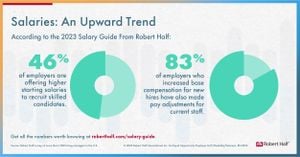Recent avian influenza outbreaks, particularly the H5N1 strain, have severely impacted poultry sales across various regions, including Karnataka, India. The Karnataka Poultry Farmers and Breeders Association has reported notable shifts, with vendors indicating sales dips far more substantial than the official estimates. While the state of Karnataka has yet to officially record any cases of bird flu, fears fueled by misinformation have left local poultry farmers and vendors reeling.
According to Manjesh Kumar Jadav, the vice-president of the Karnataka Poultry Farmers and Breeders Association, poultry sales have declined by about 5% officially. Yet, ground reports from vendors suggest reductions closer to 30% to 50%. Jadav stated, "We haven't reported or seen any bird flu cases so far in the state. But...these rumors have impacted sales. Even the upcoming Mahashivaratri festival has had a minor effect." This uncertainty has created hesitance among consumers, who have turned to alternative protein options under the shadow of avian flu rumors.
Local vendors like MD Hamid from Jayanagar relayed similar experiences, stating, "We used to have two vans come in a week with eggs, but now it has reduced to one van per week. Our sales have reduced...20%-30%...after this bird flu news. Customers are asking about the source, quality, and freshness of our products, indicating their hesitance." A significant concern, reflected across social media platforms, has become the fear associated with consuming poultry products.
Adding to the urgency of the situation, avian influenza has reached beyond birds, with recent reports indicating the virus was detected for the first time in rats in California, linked to poultry farms experiencing outbreaks. This new finding has raised alarm, as it signals the potential for the virus to affect humans and other mammals more broadly. The U.S. Department of Agriculture (USDA) confirmed the recent detections, with the total human cases now exceeding 70, including one death.
The USDA has responded to this growing concern by reinstilling positions for bird flu experts who had previously been laid off due to budget cuts enforced by Elon Musk's Department of Government Efficiency. The USDA stated, "Although several positions supporting [bird flu] were notified of their terminations...we are working to swiftly rectify the situation." This lapse and subsequent reinstatement highlight the federal government's struggle to address the rising threat of avian influenza amid budget constraints.
Reports indicate more than 162 million birds have been affected across the United States since the outbreak began, reinforcing the severity of the situation. Poultry workers, who have faced the brunt of these outbreaks, have also raised their concerns over health risks associated with handling contaminated birds and other mammals.
Despite the current fears, the Centers for Disease Control and Prevention (CDC) assures the public of low transmission risk to humans. They advise taking precautions when coming in contact with sick animals. The challenges prevailing within the poultry industry are stark reminders of how misinformation can turn public sentiment, and government action can lag when its presence is most needed.
Consumers are reconsidering their dietary choices due to these fears. “I usually consume egg and chicken-based products thrice a week,” said Deepthi S, a B.Com student. “But now I’m trying to reduce my intake after hearing about bird flu.” Another local resident, Naveen Reddy, shared similar sentiments, stating, “During such outbreaks, it is wise to not consume chicken as we are not aware of the ways to know if the bird is infected with the virus or not.” This sentiment reflects a broader trend of migrating consumers toward red meat and other alternatives, as they seek to avoid perceived risks.
The convergence of public health concerns and economic impact is leaving several stakeholders worried about the future of the poultry industry. Farmers face not only the immediate threat of avian influenza but also the long-term impact of consumer confidence eroded by misinformation. With significant reductions reported, more substantial efforts on public education and transparency around poultry safety will be imperative for recovery.
It’s evident now more than ever, the intricacies of managing public health, misinformation, and economic stability are intertwined. Stakeholders will need to advocate diligently for accuracy and assurance as they work toward restoring the poultry market to health.



